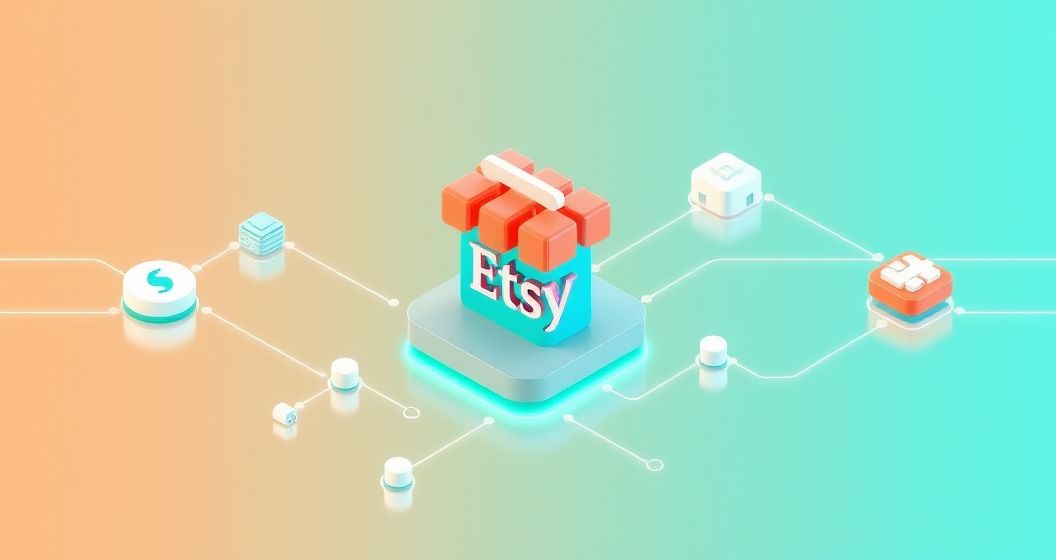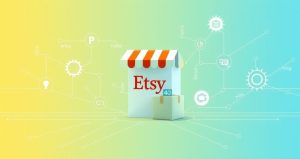In the dynamic world of online retail, Etsy stands out as a vibrant marketplace for unique, handmade, and vintage items. For sellers, managing an Etsy shop can be a rewarding yet complex endeavor, encompassing everything from product creation to inventory management, order fulfillment, and customer service. As businesses grow, the need for efficiency becomes paramount. This is where strategic Etsy integrations come into play, offering powerful solutions to automate tasks, centralize operations, and ultimately, free up valuable time for creative pursuits and business expansion.
Understanding Etsy Integrations: Tools for Growth
Etsy integrations are third-party applications or software solutions designed to connect directly with your Etsy shop, extending its capabilities beyond the platform’s native features. These tools are built to address common pain points for Etsy sellers, such as managing inventory across multiple platforms, automating shipping processes, streamlining accounting, or enhancing marketing efforts. By leveraging these integrations, sellers can transform their operational workflow, reduce manual errors, and gain a competitive edge in a bustling marketplace. The right integration acts as a digital assistant, ensuring your business runs smoothly and efficiently.
1. Inventory Management Integrations: Syncing Stock Across Channels
One of the most critical aspects of running a successful online store, especially when selling on multiple platforms, is accurate inventory management. Etsy inventory integrations provide real-time synchronization of stock levels, preventing overselling and ensuring that product availability is consistent across your Etsy shop and any other e-commerce sites you might operate. These powerful tools offer a centralized dashboard to track products, manage variations, and update quantities effortlessly, significantly reducing the risk of disappointing customers with out-of-stock items or processing delayed refunds.
Beyond simple quantity adjustments, advanced inventory solutions can offer detailed reporting on product performance, help identify best-sellers, and even automate reorder points. This proactive approach to stock control ensures that popular items are always available, while slow-moving inventory can be strategically managed. For Etsy sellers looking to expand their reach without multiplying their workload, robust inventory management integrations are indispensable for maintaining operational integrity and customer satisfaction.
2. Efficient Order Fulfillment: Shipping and Label Integrations
Efficient shipping is a cornerstone of positive customer experience, and Etsy shipping integrations are designed to streamline every step of the fulfillment process. These tools connect your Etsy orders directly with shipping carriers, allowing for automated label generation, batch printing, and real-time tracking updates. Sellers can often access discounted shipping rates through these platforms, leading to significant cost savings that can be reinvested into the business or passed on to customers, making their offerings more attractive. Popular integrations also help compare carrier services, ensuring the most cost-effective and reliable delivery options are always chosen.
From the moment an order is placed to its final delivery, these integrations reduce manual data entry and minimize the chances of errors, a common issue with high order volumes. Integration with various postal services and private carriers means sellers can offer diverse shipping options to buyers worldwide. This level of automation in order fulfillment not only speeds up the process but also provides customers with transparent tracking information, building trust and encouraging repeat purchases for your Etsy business.
3. Financial Harmony: Accounting Integrations for Tax & Tracking
Managing the financial aspects of an Etsy business, from tracking sales and expenses to preparing for tax season, can be daunting. Etsy accounting integrations simplify these complex tasks by automatically syncing your sales data, transaction fees, and other financial information directly into your preferred accounting software. Tools like QuickBooks or Xero can connect seamlessly, providing a clear, real-time overview of your business’s financial health. This automation eliminates the need for manual data entry, saving countless hours and reducing the likelihood of costly human errors, which is crucial for any growing enterprise.
Beyond basic record-keeping, these integrations facilitate easy expense tracking, bank reconciliations, and comprehensive financial reporting. Sellers can quickly generate profit and loss statements, balance sheets, and sales tax reports, making tax preparation less stressful and more accurate. Understanding your cash flow and profitability is vital for making informed business decisions, and reliable accounting integrations provide the insights needed to strategically grow your Etsy shop, ensuring compliance and financial stability.
4. Expanding Reach: Multi-Channel Sales Platform Integrations
Many Etsy sellers eventually look to diversify their sales channels to reach a broader audience beyond the Etsy marketplace. Integrating your Etsy shop with other e-commerce platforms, such as Shopify or WooCommerce, allows for centralized management of products, orders, and inventory across all your storefronts. These multi-channel integrations are invaluable for maintaining consistent branding and pricing while expanding your market presence. They ensure that product listings, descriptions, and images are synchronized, reducing the effort required to manage multiple online shops independently.
The primary benefit of these integrations is the ability to scale your business without the overhead of managing disparate systems. A sale on Shopify automatically updates inventory on Etsy, and vice versa, preventing overselling and streamlining order processing from a single dashboard. This strategic approach not only maximizes visibility and potential sales but also provides a safety net by not relying solely on one platform. For ambitious Etsy sellers, integrating with other sales channels is a key step towards sustainable growth and market dominance.
5. Automating Production: Print-on-Demand & Dropshipping Integrations
For Etsy sellers utilizing print-on-demand (POD) or dropshipping models, seamless integrations are essential for automating the entire fulfillment workflow. These specialized integrations connect your Etsy shop directly with POD suppliers or dropshipping providers, meaning that once an order is placed on Etsy, it is automatically routed to the supplier for production and shipping. This eliminates the need for manual order forwarding, inventory holding, or packaging, allowing sellers to focus entirely on design, marketing, and customer engagement.
The efficiency gained from these integrations is transformative. They enable sellers to offer a vast catalog of products without upfront investment in inventory, significantly lowering the barrier to entry and reducing financial risk. Popular POD integrations manage everything from mock-ups and product variants to order tracking and shipping notifications, all without direct seller intervention. This level of automation empowers Etsy entrepreneurs to scale their offerings and reach new markets with unparalleled ease and operational simplicity.
6. Data-Driven Growth: Analytics and Reporting Tools
While Etsy provides some basic analytics, integrating with advanced reporting and analytics tools offers a much deeper dive into your shop’s performance. These integrations gather comprehensive data on sales trends, customer behavior, product popularity, and marketing effectiveness, providing actionable insights that Etsy’s native tools might not offer. Understanding which products are performing best, where your customers are coming from, and the effectiveness of your promotions is crucial for making informed business decisions and optimizing your strategy for maximum profitability.
These sophisticated tools can help identify growth opportunities, pinpoint areas for improvement, and optimize pricing strategies. By leveraging detailed reports and visualizations, Etsy sellers can gain a competitive edge by adapting their offerings and marketing efforts based on concrete data rather than guesswork. Investing in robust analytics integrations is an investment in the strategic future of your Etsy business, guiding it towards sustained success and enhanced customer engagement.
Maximizing Your Etsy Potential with Strategic Integrations
Navigating the various demands of an Etsy business can be significantly simplified and optimized through the strategic use of integrations. From managing inventory and streamlining shipping to harmonizing finances and expanding sales channels, the right tools empower sellers to automate mundane tasks, reduce errors, and dedicate more time to creativity and customer connection. Exploring the diverse range of available integrations allows each seller to tailor a suite of tools that perfectly fits their unique business model and growth aspirations. By embracing these technological advancements, Etsy entrepreneurs can unlock new levels of efficiency, enhance their operational flow, and ultimately achieve greater success in the competitive online marketplace.






